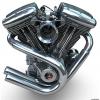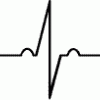I am trying to follow the interesting work of the Prof. Auwerx's lab at EPFL (LISP, Laboratory of Integrative Systems Physiology) and thought useful to log it here as a resource for the research on NAD+ precursors and nicotinamide riboside:
http://www.limna.ch/...ating_teams/134
One interesting topics of research when reading the following sentence from their work could be related to the nutrigenetics of OXPHOS and the impact of nicotinamide riboside:
"...We recently demonstrated that the mitochondrial unfolded protein response (UPRmt) contributes to the control of mitochondrial function and health- and lifespan in the mouse. Interference with mitochondrial translation, either through genetic (mutations of the mitochondrial ribosomal proteins) or pharmacological strategies (e.g. doxycycline), reduces the production of mtDNA encoded ETC components, resulting into a mito-nuclear imbalance between mtDNA and nDNA encoded OXPHOS proteins, which subsequently activates UPRmt. UPRmt will then induce a reparative response that restores mitochondrial function, which in the worm is also linked with the extension of lifespan. Interestingly, compounds that activate mitochondrial biogenesis, such as rapamycin and resveratrol, as well as NAD+ precursors and PARP inhibitors, also induced UPRmt with beneficial effects on mitochondrial function and organismal health. Targeting the UPRmt may hence improve mitochondrial dysfunction and favorably impact on healthspan..."(bold mine)
I knew I had seen doxycycline mentioned somewhere interesting and confusing before:
Antibiotics that target mitochondria effectively eradicate cancer stem cells, across multiple tumor types: treating cancer like an infectious disease.
Here, we propose a new strategy for the treatment of early cancerous lesions and advanced metastatic disease, via the selective targeting of cancer stem cells (CSCs), a.k.a., tumor-initiating cells (TICs). We searched for a global phenotypic characteristic that was highly conserved among cancer stem cells, across multiple tumor types, to provide a mutation-independent approach to cancer therapy. This would allow us to target cancer stem cells, effectively treating cancer as a single disease of "stemness", independently of the tumor tissue type. Using this approach, we identified a conserved phenotypic weak point - a strict dependence on mitochondrial biogenesis for the clonal expansion and survival of cancer stem cells. Interestingly, several classes of FDA-approved antibiotics inhibit mitochondrial biogenesis as a known "side-effect", which could be harnessed instead as a "therapeutic effect". Based on this analysis, we now show that 4-to-5 different classes of FDA-approved drugs can be used to eradicate cancer stem cells, in 12 different cancer cell lines, across 8 different tumor types (breast, DCIS, ovarian, prostate, lung, pancreatic, melanoma, and glioblastoma (brain)). These five classes of mitochondrially-targeted antibiotics include: the erythromycins, the tetracyclines, the glycylcyclines, an anti-parasitic drug, and chloramphenicol. Functional data are presented for one antibiotic in each drug class: azithromycin, doxycycline, tigecycline, pyrvinium pamoate, as well as chloramphenicol, as proof-of-concept. Importantly, many of these drugs are non-toxic for normal cells, likely reducing the side effects of anti-cancer therapy. Thus, we now propose to treat cancer like an infectious disease, by repurposing FDA-approved antibiotics for anti-cancer therapy, across multiple tumor types. These drug classes should also be considered for prevention studies, specifically focused on the prevention of tumor recurrence and distant metastasis. Finally, recent clinical trials with doxycycline and azithromycin (intended to target cancer-associated infections, but not cancer cells) have already shown positive therapeutic effects in cancer patients, although their ability to eradicate cancer stem cells was not yet appreciated.
http://www.ncbi.nlm....pubmed/25625193
Now cancer as a rule is known to shut down mitochondria and rely on glycolysis as a means of energy production as the mitochondria would otherwise send out an apoptosis signal for the defective cell in which they reside.
The above study seems to contradict this, but the research that Albedo linked seems to extend on what was probably unknown or overlooked at the time of the 'Antibiotics that target mitochondria...' study:
That doxycycline etc "...activates UPRmt. UPRmt will then induce a reparative response that restores mitochondrial function...".
This makes the Warburg Effect and the return of mitochondrial function for the eradication of cancer theory unambiguous!
Thx Albedo! 
These contradicting theories have been bugging me and others for a long time!
This speaks volumes for starting a mitochondrial protector like C60oo early, before there are defective mitochondria for it to protect.
and/or:
For the cycling C60oo and for the upregulation of PARKIN and/or UPRmt a day or 2 before taking it.
Edited by Logic, 15 April 2016 - 02:25 PM.
































 This topic is locked
This topic is locked


























